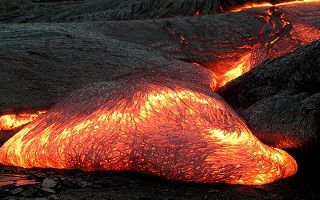From Guest Blogger Monica Gomez: What is the Future of Geothermal Energy in the US?

While it hasn’t caught on as a clean energy source as much as solar, wind, and hydro energy, it is quickly catching up. It is only a matter of time before geothermal energy becomes an important part of the U.S. economy.
What is Geothermal Energy?
Geothermal energy use has been around for quite a while. In fact, How Stuff Works tells us that the first geothermal power plant that was used for commercial purposes was built a century ago in Italy. This form of energy uses natural forces scientists have understood well for a long time.
The premise behind geothermal energy is simple. The layer of magma just below the earth’s surface generates heat. This heat rises to the surface of the earth. It is hotter in some places than others. There is geothermal heat everywhere on the earth’s surface in varying amounts, depending on the location.
Geothermal power plants tap into this heat and use it to power electric generators. The heat usually takes the form of steam coming up from the ground. The power plants capture the steam and convert it to electricity through their generators. Locating the places best suited for capturing a large amount of this steam is the largest challenge to the industry. Recently, however, new technologies have been able to more readily identify these areas.
Why Is Geothermal Energy Becoming More Important to Power Production in the United States?
Geothermal energy is becoming a stronger presence in the U.S. power market. This is not only because technicians are locating more sites for tapping into this energy, but also because the geothermal wells are being drilled more quickly and with better construction and efficiency. The better the wells, the more energy each plant can capture and use.
Geothermal energy is getting cheaper to use, as well. The cost of operating geothermal power plants continues to go down as the technology for building and operating them improves. This makes it a more attractive option for power production.
Finally, GreenBiz tells of a new technology that now allows scientists to draw geothermal energy out of dry rock areas. This means that geothermal power plants are no longer necessarily limited to regions on the planet where the energy is close to the surface. This is important, because geothermal energy contains 50,000 times more energy than all the fossil fuel sources in the world.
Geothermal Moving Forward
Only four years ago, geothermal energy accounted for just 1 percent of the energy produced on earth. It is now estimated that geothermal energy will account for between 10 and 20 percent of the earth’s energy production for commercial and consumer use by 2050, writes The Refrigeration School.
According to the U.S Bureau of Labor Statistics, most of these hot spots are in the western United States. However, a small number exist in other parts of the nation. This means geothermal energy has the potential to provide clean power across the country and impact the economy nationwide.
As interest in green technologies grows, and as fossil fuels face their eventual and inevitable decline, it seems that geothermal energy is a logical replacement energy source. The Natural Resources Defense Council claims that, with no fuel costs to account for, geothermal energy will remain relatively stable in its cost to consumers, making it an even more attractive energy alternative in the United States moving forward. Geothermal energy production in the United States could be a promising possibility for all.
